Back in the 1980s…
Back in the mid-1980s, my social planning firm did a roaring trade in ageing. Every Sydney developer fantasized about making a fortune in retirement housing. We were a small firm of social planners – trying variously to dissuade them or help them. Most were beyond help: so gripped by greed that they could not discuss matters as banal as gerontology. Blessedly, the fashion passed and we returned to homelessness and poverty (not ours – our subject matter).
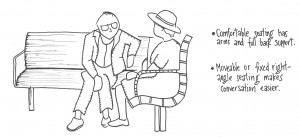
The good thing was that we learned so much about the physical and psychological factors associated with ageing. Then in my forties, I could not imagine my own elderhood; it was a distant reality. My most brilliant employee, in her early twenties, was a young architecture graduate.
Together we trawled through volumes of research and crafted detailed site-planning and design guidelines for older people’s housing. Tromping around retirement villages, cursing their failings, we became experts in non-slip surfaces, sheltered seating, walking circuits, natural surveillance, ramp design, handrails… And, considering the older residents themselves: limited visual acuity and peripheral vision, susceptibility to glare, inability to hold a mental map, disorientation in space and, most emphatically, fear of falling.
Falling down
Recently, a dear friend of mine fell and broke her hip (she’s 79). She was squatting to inspect a cupboard when a mouse jumped out and startled her, causing her to fall backwards. She spent a month in the hospital and is recovering well. But now my feisty friend (who walked the width of England in her early seventies) emails to say she’s afraid of going out for a walk on crutches.
Afraid?
Once I might have found that hard to believe.
But now I understand.
Not paying attention
A few years ago, not paying attention (actually peering somewhat rudely at a building under construction), I slipped on roadside gravel and dislocated my shoulder. It hurt a lot. I was terrified of falling again; I began to feel fragile, old and crippled. A wise friend instructed me to return and walk confidently past the house. After I did that repeatedly, my fear abated. To combat my fear of knocking my shoulder, our compassionate local hospital nurse recommended a sling when I travelled by plane. Who would be mean enough to knock a nice old lady with her arm in a sling? It worked a treat. (As did the odd pre-booked wheelchair for long air journeys.)
The Blizzicane
Recently, I spent a month teaching at Harvard: the highlight of my career. And a shocking and salutary experience for a person turning seventy.
I feared my boots (from Myers department store in Adelaide) would not pass muster but my Boston host thought I might survive February.
How wrong she was!
A week into my visit, the fiercest blizzard in 57 years blanketed Boston.
Massive.
A Blizzicane. Nearly a metre of snow fell in a few hours.
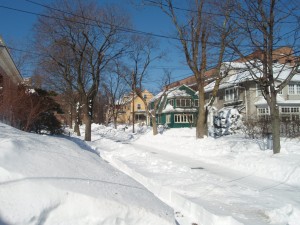
After we dug ourselves out, I took my credit card to Eastern Mountain Sports in Harvard Square but fear had me in its grip. Now I had warm boots with good tread but I was absolutely terrified. Terrified of the footpaths at night (our classes ended at 6 pm; taxis were out of the question).
Not surprisingly, every path on the campus of America’s premier university was plowed within seconds.

That wasn’t my problem.
My problem was low-density suburbia.
Despite Boston’s admirable transit network, suburban Boston is crap for pedestrians. Everyone drives gigantic cars with snow tyres. There I was in my overpriced `showerproof’ down coat (bought in Melbourne in January) and new boots that weighed a ton. And a backpack full of books and a laptop.
My nightly walk home from the Harvard bus was six long blocks along poorly lit and partly plowed footpaths (and out into the street at the unshovelled patches). Sharing the carriageway with the cars – all of us skeetering between high snowbanks through rutted snow.
God!
All I could think of was my dislocated shoulder. And my fear of falling.
Actually, that’s not true. My shoulder worries paled in comparison to Fear of the American Medical System! Even with travel insurance, I imagined myself chained to a hospital bed, held to ransom with a broken arm, leg, shoulder, hip . . . you name it . . . in a hospital charging a trillion dollars a day.
I’d taken an elderly Canadian friend to hospital in Honolulu five years ago and she’d barely escaped!
Meanwhile, my younger colleague completely discounted my fears. The same fears we’d researched decades earlier.
What’s your problem? The snow will melt. It’s only six blocks. You’ve got boots. You’re sorted.
Raffi to the Rescue
My Armenian cousin, a long-time Boston resident (and my age) was my saviour. Before the snow melted, he took immediate action to avoid my melting down. Brooking no interference, he moved me – coat, books, boots, laptop and decaf tea bags – into his apartment in Charlestown (a dense inner city neighbourhood with well-lit streets, plowed and navigable). Close to the subway and with caf©s and pubs to die for.
And there I stayed for several charmed weeks, happily travelling about Boston on public transit. Grateful for the blessings of his generous hospitality.
(Maybe blood is thicker than water?)
The take-home messages from my story?
I wouldn’t be exaggerating if I said that this experience had a profoundly unsettling effect on me.
I cried a lot.
And then (finally), I got to thinking. What can I make of this?
What can I learn? What can we learn?
First, as our Baby Boomer generation ages, we need to understand mobility – and immobility. It’s not just physical; it’s also psychological.
Second, we’d better start talking openly about these matters and not be afraid or ashamed. (What’s there to be ashamed of, in any case?)
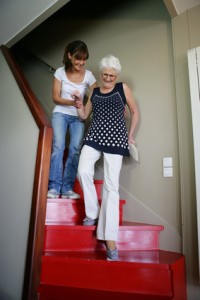
Third, we’ll need supports. And we’d better get them in place before an emergency. We need to know how and where to ask for help.
My friend with the mending hip is well networked into her community where she’s lived since 1974. She’s having gourmet meals delivered and local people come to clean her house as part of a community program. She’ll be fine.
The age-friendly neighbourhoods initiative is a good way to start. South Austalia has made a good beginning:
https://www.sa.gov.au/upload/franchise/Seniors/Office%20for%20the%20Ageing%20-%20Publications/Publications/Age%20friendly%20local%20gov.pdf
Fourth, we must accept that some of our younger colleagues are firmly in denial about ageing – ours and theirs. You know the types: the cyclists, yoga enthusiasts, marathon runners, extreme athletes”¦ (Please pass the chocolate”¦)
As an example, take my younger colleague. She has a lot to learn.
Sad but true: ageing is an expert blind spot.
By speaking out about our fear and demonstrating our resourcefulness, we can teach her.
So that she can teach her students.
And we all can benefit.
I guess, in the end, that it’s all about care. (Didn’t I write a PhD thesis about that?)
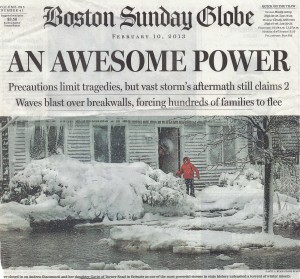
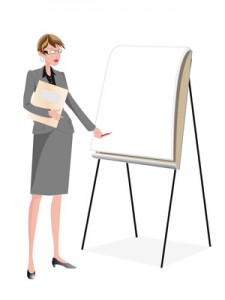
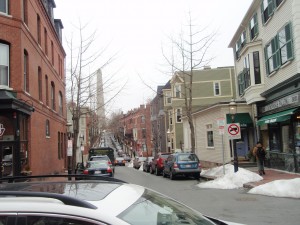
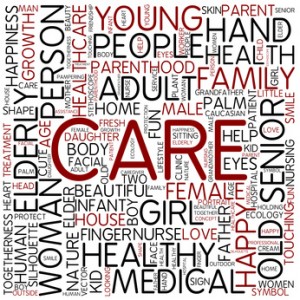
I am “the elderly friend who broke her hip.”. What a difference a few weeks of physical therapy – and determination – makes. No longer afraid to go for a walk with a crutch, yesterday I walked 6 blocks; the day before, a short “hike” with a friend on a paved park trail. I recently completed a book with a colleague on therapeutic landscapes. I wrote the chapter on “outdoor space for the frail elderly” -and now I am among that group. Now I am doubly aware of the guidelines I wrote for flat paths with good traction; non-glare paving;benches for rest at frequent intervals. Like Wendy, when I was younger I had no sense of the importance of such micro-details of design. Moving slowly, as I presently do, has it compensations. I stop to smell jasmine flowers; pause to listen to a bird in a tree above; examine a hedge of rosemary and am astonished to find in abuzz with dozens of honey bees. Which confirms another of the guidelines in our book — when people are moving slowly, create planting beside the pathways that is varied and engaging. At least I will never have to deal with the problem of snow and frozen sidewalks as Wendy did. I live in California.
Thanks, Clare! When I fell down your stairs in Berkeley in 1978 when I was 35, I had a terrible time with my foot in a cast wrapped in plastic, schlepping my books to campus on the bus in the rain. Snow is the worst. But rain can also be hazardous for people with mobility impairments. What we all need to remember (and academics must help their students understand) is that everyone is likely to have a mobility impairment at some time. It’s good to hear that you are out and about again. Sorry your visit to Australia had to be cancelled. Wendy
I’m not one of those who believes that creativity needs trauma to sustain it. There’s plenty of creative energy that derives from joy. Though admittedly it’s hard to find it on the media.
On the other hand, when trauma is transmuted into caring communication it can be therapeutic for the creator and valuable to the world.
This one looks like it’s going to do both things. The heavy dragging thing is flying high. Nice work, kiddo!
Thank-you, Noel. It did take me six months to come to grips with this — but better late than never, I guess! Kind thoughts, Wendy
Wendy, I so appreciate how you have combined the rational with the empathic in this blog posting. As someone in her forties who is touching youth wih one fingertip and old age with the other, I do appreciate the issues created by improperly designed environments. You’ve given us all some great food for thought!
I think you provide an interesting lesson about ‘fear’ here, Wendy. In western societies, it seems to be socially unacceptable to be fearful (perhaps especially for men). We are expected to ‘get over it’ and ‘get on with it’. Yet, at the same time, mainstream media perpetuates a sense of fear in our communities, through incessant reporting of crime and social problems, creating a disproportionate impression of these things.
To my mind, it’s OK to be fearful, but also essential to reflect on why we are fearful to help us deal with it.
HI Richard. It’s a complex dynamic, to be sure. One (much older) friend explained his view: that a “mentoring” relationship had established. When I showed signs of ageing and vulnerability, that challenged the way things had been for decades between us and did not fit the established picture. Ageing is a most complex business. Mostly, it’s good; often confusing and sometimes downright frightening!
Expert blind-spot indead! A student I’m advising is writing a thesis that reports on people’s reluctance to plan for aging and hence the lack of meaningful participation in municipal planning processes about aging in community. That means that we’re losing out on opportunities to cultivate our own expertise.
There’s also that beautiful expertise of family and community networks. How adept we can be at helping each other out! Such wisdom is surely a resource for better models of aging in community.
Thanks, Wendy for the invitation to grow the caring kind of expertise!
Dear Laurie:
You got me to thinking. More. And there’s more nested in this story (which is turning into a “redemptive tale”, to be sure!) You said, “Isn’t there a lesson here about braving the fear of falling (into depression too?). If there are folks to help us stand up again, there’s less to fear?” And maybe it’s not such a long fall, then, either? Yes, I agree. When I type “fall”, it often comes out as “fail”. Something in that as well. Thanks! Wendy
A year ago I went walking in my neighborhood, wearing sandals and looking at gardens as I was striding along. Suddenly, my foot hit a raised sidewalk and I flew into the air (no trapeze), landing with a thud on my head, nose hitting the pavement first. The blood surged as if a hydrant had let loose, as I struggled to get up. Out of the corner of my eye I noticed a white truck had pulled up beside me, and suddenly a man’s voice said “I’m a paramedic; I can help you”. After cleaning me up, checking for broken bones or chipped teeth, he offered to drive me to my doctor.
Instead, I persuaded him to drive me home, promising him I would have a neighbor sit with me for a few hours, since I was in shock. It’s a long story about finally going to the emergency hospital (at a doctor’s advice) and being falsely diagnosed with a brain tumor (which turned out to be a hematoma) but suffice to say it changed the way I go for walks. Now, I wear sensible walking shoes, stop if I want to admire a garden, and check often to see what’s ahead of my feet.
As we age, it is important to make changes in the way we go about our daily business, to slow down and enjoy the ride – it is often bumpy, but we’re still here, and that is what matters.
Oh Priscilla! Thank you for your account. I honour you as a wise elder. Blessings! Wendy